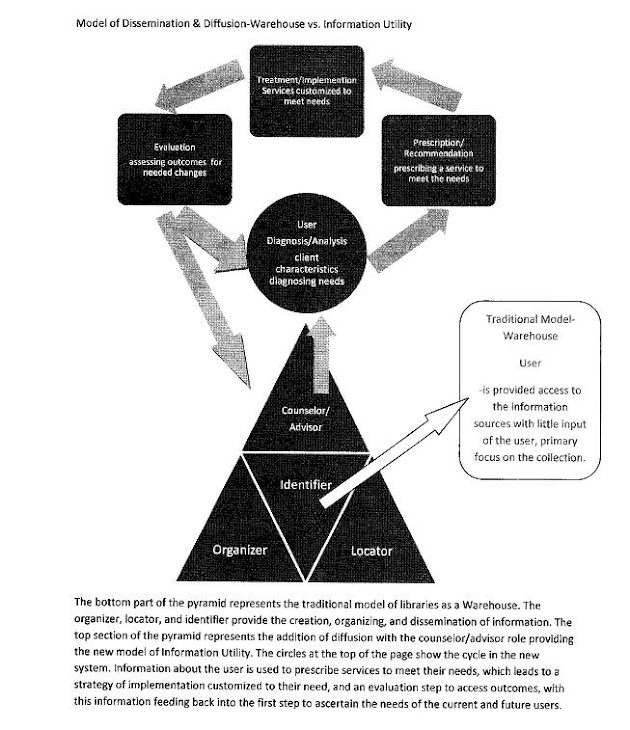Thursday, February 28, 2008
Dissemination/Diffusion Model
I have added my idea of a model for dissemination/diffusion. I am still learning so I scanned it and saved it as a picture and added it to the blog, so it is large and grainy. I hope to find an improved way to display it eventually. I hope it makes sense and no doubt I will make changes as I become more knowledgeable about the subject. Please add any comments or questions as you like. Suggestions will be appreciated.
Subscribe to:
Post Comments (Atom)


2 comments:
Very interesting. Is this a microcosm of dissemination or meant to be in the context of the entire info life cycle?
Regarding my model, I tried to make it fit into the readings from the text Chapter 5. I guess you could say it is both in answer to your question. The bottom part shows the library cycle. The organizer does not interact with the clientele directly they are the catalogers and technical services people who collect and organize the materials. The locator is ready reference staff, they are source oriented and they are not concerned with the process used by the client (the past traditional style of reference service). The identifier does conduct an interview with the client and provides sources but there is no effort to clarify or customize the resources to the specific needs of the client. The top part of the pyramid show the newer ideas of the advisor who helps the client not only find sources but use them and the counselor who also uses the interview to determine the needs and learning preferences of the information user (Greer, Grover, and Fowler, p. 68-69).
The top part shows how the Information Utility process fits into the scheme with the advent of the Counselor/Advisor concepts. The cycle starts with the user interview taking into consideration specific needs and the characteristics of the client. Then based on this a prescription/recommendation is made to meet their needs. These services are provided and then evaluated for outcomes. Were their needs met, how their needs could have been better met? This information is fed back into the user cycle for future services, and the library cycle to help with the collection and organizing of materials to better meet future needs.
Greer, R.C., Grover, R.J., and Fowler, S.G. (2007). Introduction to the library and information professions. Westport, Connecticut: Libraries Unlimited.
Post a Comment